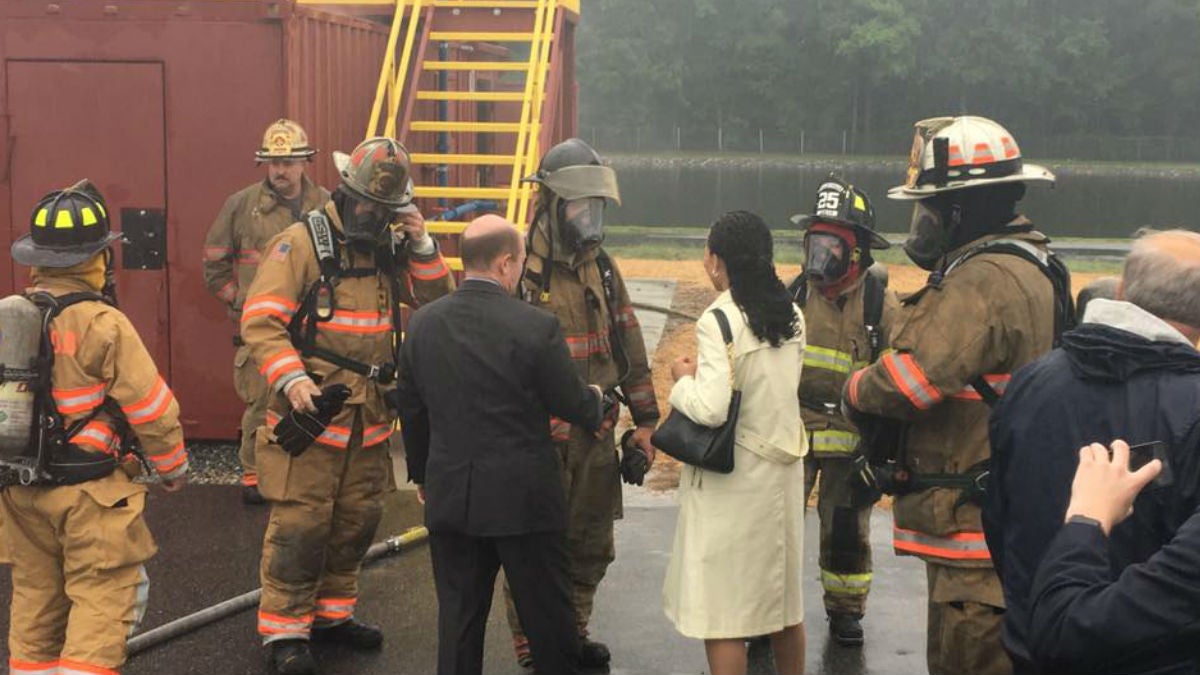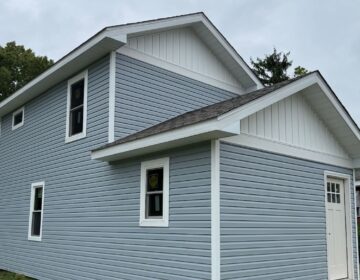Delaware joining in first-responders’ mobile network
The state joined with the First Responder Network Authority to build a wireless broadband network to improve communications for first responders statewide.

Sen. Chris Coons and Congresswoman Lisa Blunt Rochester talk to firefighters at Delaware State Fire School in Dover. (photo courtesy DSFS)
Fast, clear communication is one of the most vital tools first responders need to save lives and reduce the impact of emergency situations. In times of major emergencies, however, users can overload the cellular network, limiting access for first responders.
This month, Gov. John Carney signed a letter opting in to a federal program for a new national communications network. The federal First Responder Network Authority, known as FirstNet, will build a wireless broadband network for first responders. The network will prioritize cell calls and data requests for police, firefighters and EMS.
“Our first responders need access to state-of-the-art technology to communicate and respond effectively during emergency situations,” Carney said in a statement. “This plan has real potential to prioritize communications among law enforcement agencies, fire and EMS personnel, and help our first responders protect the lives of Delawareans.”
The cellular traffic overload that followed the 9/11 attack in New York showed how first-responder communications could be hindered when relying on the same network as other personnel. “That increased traffic causes slowdowns and sometimes stoppages as far as people being able to communicate,” said Robert Coupe, secretary of the Delaware Department of Safety and Homeland Security.
Opting in to FirstNet allows work to begin to build towers and other infrastructure in Delaware. To access the network, Delaware would have to contract with AT&T to provide emergency responders with new smartphones to access the network.
Coupe said that decision will be made at a later date.
“The state will follow the normal procurement process … We know AT&T can provide this through FirstNet,” he said. “Are there any other competitors who will provide something that is compatible to it and allow our first responders to have that same priority and pre-emption services?”
During non-emergency times, regular cell phone customers would be able to access the towers installed as part of FirstNet, although first responders would still have priority for speed and access over the system.
“During an emergency, civilian cellular broadband traffic can be diverted or stalled so that those first responders will have communications,” Coupe said. “That’s to ensure the safety and security of our citizens and our first responders during a critical incident.”
The FirstNet system is separate from the radios police, fire and EMS personnel use on a daily basis.
In the late 1990s, Delaware’s emergency communications system switched to an 800 MHz system that used a series of towers to allow dispatchers to talk to first responders and first responders to talk with each other.
The system was not without its problems. The radio system didn’t function well in parts of buildings and low-lying areas, causing concerns about emergency responders being left without the ability to communicate at the worst possible times. During Gov. Ruth Ann Minner’s administration from 2000-2008, the state spent more than $102 million to fix problems with the system.
The state is now in the third year of an eight-year project to upgrade the radio system once again. “We’re updating the towers, the systems, the microwaves, the antennas, and also all of the handheld radios are being upgraded to a more modern radio that’s capable of meeting the national standard,” Coupe said.
WHYY is your source for fact-based, in-depth journalism and information. As a nonprofit organization, we rely on financial support from readers like you. Please give today.





